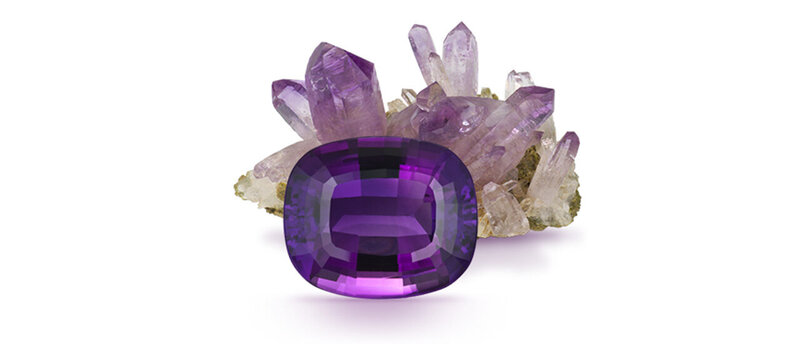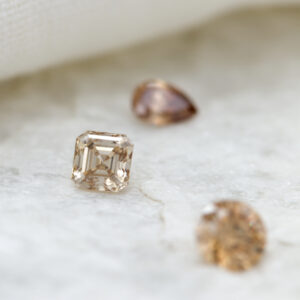A gem that is a “remedy against drunkenness”? That’s just one benefit attributed to Amethyst, the birthstone for February. It was also believed to keep the wearer clear headed, focused and quick witted in battle or business affairs, or calm lovers overrun by passion.
Long favoured by royalty and once held in the same regard as diamonds, amethyst has been found in jewellery dated as early as 2000 BC. It wasn’t until more abundant sources of amethyst were found, that it started being enjoyed by more than just the wealthiest buyers.

Amethyst often occurs in geodes or in the cavities of granite rocks. It’s composed of quartz, and gets it’s colour from iron impurities, trace elements and natural irradiation. The colour can range from light pinkish violet to deep blue or reddish purple. This deep purple with flashes of blue or red is the highest valued colour and is known as “Siberian Amethyst”. Originally this name was reserved for gems that originated from Siberia, as this colour and quality was unique to that area. However as this source is now depleted, the name refers to any amethyst that shows this colour. On the opposite end of the scale, “Rose de France” refers to pale, pinkish violet or lilac gems and is also popular. Today, amethyst is mainly found in areas of South America, Africa and America.

There has been a growing market for fantasy cut gems. Gem cutters can work outside of the more common cut shapes such as round, oval, emerald etc and cut rough gems into more unique shapes. These techniques use a lot more rough material than the standard cuts do and have a lot more wastage, so rather than using more expensive stones such as diamonds or sapphires that are also hard to obtain in large sizes, they generally will use semi precious gems such as amethyst, citrine, tourmaline, topaz etc.

Amethyst rates a 7 on the Mohs scale so is durable enough for daily wear in rings or other jewellery. However, it is susceptible to damage from harder gems such as rubies, sapphires and diamonds so take care when storing near other pieces. It may also show wear over time and require repolishing.
Amethyst is often heat treated to improve the colour if it is too dark, or remove undesirable brownish inclusions. This treatment results in a permanent colour change but may make the stone slightly more brittle so care should be taken with sharp edges or pointy faceted corners. Some amethyst can fade with prolonged exposure to strong light so while it is fine with normal wear, it’s probably best not to wear to the beach every day!
So get in touch with us if you’d like to get started on an amethyst piece or even if you’d simply like us to source a stone for you.





